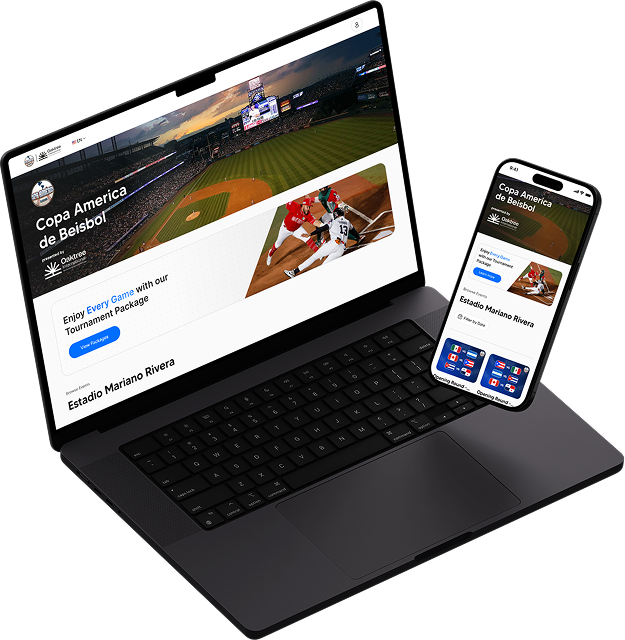The New Digital Fan in Football
From stadium seats to smartphone screens: How technology, fan tokens, and CRM reshape engagement and monetization in Brazil and beyond.
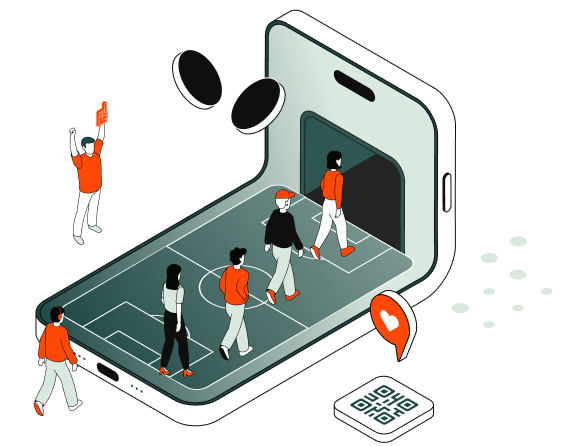
The Origins of Membership Programs in Brazil
At the end of the 1990s, when the first Membership Programs (Supporter Schemes – “ST”) appeared in Brazil, this product had three main objectives:
- Ensure recurring revenues from ticketing, since all supporter plans at the time offered 100% free tickets included in the packages.
- Increase Stadium Occupancy Rates.
- Establish the first permanent relationship line with fans by offering a product and generating at least basic information about them.
They emerged in this format because, at the time, with old stadiums and no comfort, occupancy rates were low, below 50% for most clubs in the competitions they played in the country. Looking slightly ahead, it wasn’t hard to conclude that, with free tickets as the main benefit, the ST product was already born with a future commercial bottleneck: the physical limitation of stadiums and arenas.
At the same time in Europe, ST programs were already seen as a new source of revenue, not including tickets in the packages, but rather offering the right to purchase them with priority and at a discount. Non-members could still buy tickets, but only if any remained after the exclusive members’ sales period. This structural difference was strategically vital for clubs, as it created in fans the need to become members in order to access the stadium. Thus, a second revenue stream was created without harming ticketing income, since tickets could still be priced higher, with discounts applied to members as promised. The “leftover” tickets after the members’ priority window could even be sold at higher prices than before. Checkmate.
While ST emerged, other lines of fan engagement were gradually expanded and developed. Licensed products throughout the 2000s experienced a huge boom, and with the expansion of licensed product lines came the improvement and growth of e-commerce, which today is almost entirely outsourced by football clubs to specialized companies. Physical stores have also modernized over the years. Different models appeared - some based on franchising, others on brand licensing - within defined purchase and brand display rules between clubs and licensees. The latter is the model most applied in Brazil today.
Ticketing Modernization and Fan Experience
Ticketing has also been modernized. Ticket sales in Brazil began to be offered online. Even with the inconvenience of having to exchange vouchers for tickets at the box office, customers at least had their tickets guaranteed once they completed online purchases. Today, it is no longer necessary to go to the box office, except in cases of special benefits such as free or half-price tickets required by law. With technology, tickets can now be received directly on mobile phones, ensuring access to the stadium even if internet connectivity fails at the time of entry. Technology has greatly improved the football fan experience over the years.
With technological advances, Club TV also emerged. Due to limited investment capacity and a lack of vision regarding the importance of this channel, nearly all club TVs were launched on YouTube, a free platform. As a result, clubs focused on generating content and organizing it minimally so fans could access something different. Over time, with technological progress, OTT platforms emerged, allowing clubs to present digital content in a more structured way, opening opportunities for advertising from partners and sponsors, as well as the possibility of generating subscription revenues for exclusive content. All this technology already exists and is available on the market, but innovation is not simply applying technology. Important steps must still be taken, as this will soon become one of the main engagement platforms in a society where people choose what, where, and when to watch their favorite content, willing even to pay for it, but demanding increasing quality.
Following the path of technological advances came the App or Super App, designed to deliver a wide range of products, services, and content to fans directly in the palm of their hands, accessible at their convenience. Of course, the App or Super App also plays an important role in recording fan preferences and tracking their consumption from this platform.
Gamification, whether through Fantasy Games or Prediction/Trivia Games, also emerged as an excellent alternative to engage fans not only around club content, products, and services but also to connect them with sponsoring and partner brands, further expanding clubs’ ability to increase engagement and revenues while delivering perceived value directly to the final consumer: the fan.
Fan Tokens, NFTs, and the Introduction of FANPASS
In the era of cryptocurrencies, we must mention Fan Tokens and NFTs, which arrived in Brazil with a strong impact, in a hybrid sponsorship and licensing format. However, they failed to fully seize the first wave of fan connection. In the case of NFTs, isolated launches took place in the Brazilian market, but none as part of a broader business strategy that could ensure sustainability. Fan Tokens followed the same path, with massive launches and offerings to fans, but without addressing the key sustainability driver of this product: the quality of fan experiences available exclusively through token acquisition.
In a second wave of fan tokens, FANPASS was developed - not only to meet fans’ growing demand for experiences but also to introduce an essential innovation: recurring commercialization and usage. With FANPASS, there is a limit to the tokens issued, and as they are redeemed for experiences, they are reissued and made available for resale, effectively becoming a circulating currency within the club ecosystem.
All these touchpoints mentioned above share a fundamental importance: they generate data and information about fan relationships and consumption in football.
Today, in order not to lose current and future generations of fans, the immediate application of Data Intelligence and generous investment in CRM is imperative. This provides football with a unique opportunity not only to better understand its customers but also to be extremely precise in offering content, products, and services, while enabling low-cost, continuous surveys on specific topics. This broadens football’s commercial activity across multiple other digital ecosystems of products and services - intelligently and on a scale.
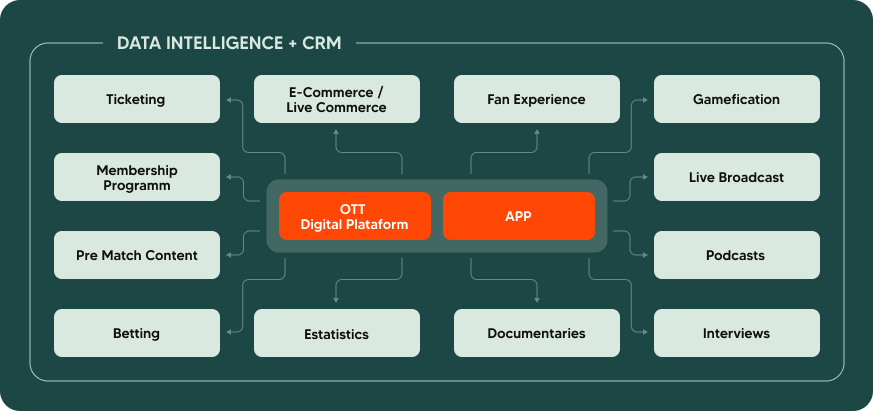
Around Digital Platforms (OTTs) and Apps, the fan/supporter/customer will be able to increasingly expand and deepen their relationship with football and with sports in general. The content is diverse, as are the offerings.
Soon, the Broadcasting Rights of some sports and certain categories will involve not only the right to show pre- and post-event coverage on the Club TV, but also live segments of the events themselves, or even full live coverage, depending on negotiations and values.
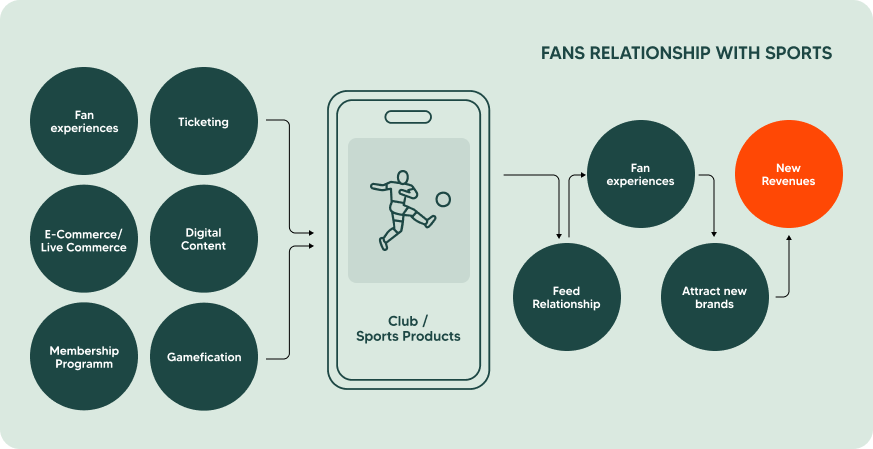
Soon, the Supporter Program (ST) will no longer be the main pillar of the fan/club relationship. It will become a product aimed at those fans whose primary focus is purchasing tickets to attend stadiums/arenas and will instead be part of a broader and more comprehensive engagement framework.
In modern football, when managed with professionalism and competence, 360º monetization opportunities are diverse and constantly knocking on the doors of clubs and sports organizations in general.
The Digital Fan of today in Brazil can and should be much more connected, engaged, and closer to their favorite club than they are today. There is still “a lot of ground to clear” in most Brazilian sports clubs. We are already behind in implementing solutions in a strategic and integrated way.
Final Thoughts: Investment in Digital Fan Engagement
Investment is essential, not only in solutions, but also in people and companies that can enable clubs, leagues, federations, and confederations to rebuild this entire journey with the fan. Prosperity depends on the effort dedicated.
The Origins of Membership Programs in Brazil
At the end of the 1990s, when the first Membership Programs (Supporter Schemes – “ST”) appeared in Brazil, this product had three main objectives:
- Ensure recurring revenues from ticketing, since all supporter plans at the time offered 100% free tickets included in the packages.
- Increase Stadium Occupancy Rates.
- Establish the first permanent relationship line with fans by offering a product and generating at least basic information about them.
They emerged in this format because, at the time, with old stadiums and no comfort, occupancy rates were low, below 50% for most clubs in the competitions they played in the country. Looking slightly ahead, it wasn’t hard to conclude that, with free tickets as the main benefit, the ST product was already born with a future commercial bottleneck: the physical limitation of stadiums and arenas.
At the same time in Europe, ST programs were already seen as a new source of revenue, not including tickets in the packages, but rather offering the right to purchase them with priority and at a discount. Non-members could still buy tickets, but only if any remained after the exclusive members’ sales period. This structural difference was strategically vital for clubs, as it created in fans the need to become members in order to access the stadium. Thus, a second revenue stream was created without harming ticketing income, since tickets could still be priced higher, with discounts applied to members as promised. The “leftover” tickets after the members’ priority window could even be sold at higher prices than before. Checkmate.
While ST emerged, other lines of fan engagement were gradually expanded and developed. Licensed products throughout the 2000s experienced a huge boom, and with the expansion of licensed product lines came the improvement and growth of e-commerce, which today is almost entirely outsourced by football clubs to specialized companies. Physical stores have also modernized over the years. Different models appeared - some based on franchising, others on brand licensing - within defined purchase and brand display rules between clubs and licensees. The latter is the model most applied in Brazil today.
Ticketing Modernization and Fan Experience
Ticketing has also been modernized. Ticket sales in Brazil began to be offered online. Even with the inconvenience of having to exchange vouchers for tickets at the box office, customers at least had their tickets guaranteed once they completed online purchases. Today, it is no longer necessary to go to the box office, except in cases of special benefits such as free or half-price tickets required by law. With technology, tickets can now be received directly on mobile phones, ensuring access to the stadium even if internet connectivity fails at the time of entry. Technology has greatly improved the football fan experience over the years.
With technological advances, Club TV also emerged. Due to limited investment capacity and a lack of vision regarding the importance of this channel, nearly all club TVs were launched on YouTube, a free platform. As a result, clubs focused on generating content and organizing it minimally so fans could access something different. Over time, with technological progress, OTT platforms emerged, allowing clubs to present digital content in a more structured way, opening opportunities for advertising from partners and sponsors, as well as the possibility of generating subscription revenues for exclusive content. All this technology already exists and is available on the market, but innovation is not simply applying technology. Important steps must still be taken, as this will soon become one of the main engagement platforms in a society where people choose what, where, and when to watch their favorite content, willing even to pay for it, but demanding increasing quality.
Following the path of technological advances came the App or Super App, designed to deliver a wide range of products, services, and content to fans directly in the palm of their hands, accessible at their convenience. Of course, the App or Super App also plays an important role in recording fan preferences and tracking their consumption from this platform.
Gamification, whether through Fantasy Games or Prediction/Trivia Games, also emerged as an excellent alternative to engage fans not only around club content, products, and services but also to connect them with sponsoring and partner brands, further expanding clubs’ ability to increase engagement and revenues while delivering perceived value directly to the final consumer: the fan.
Fan Tokens, NFTs, and the Introduction of FANPASS
In the era of cryptocurrencies, we must mention Fan Tokens and NFTs, which arrived in Brazil with a strong impact, in a hybrid sponsorship and licensing format. However, they failed to fully seize the first wave of fan connection. In the case of NFTs, isolated launches took place in the Brazilian market, but none as part of a broader business strategy that could ensure sustainability. Fan Tokens followed the same path, with massive launches and offerings to fans, but without addressing the key sustainability driver of this product: the quality of fan experiences available exclusively through token acquisition.
In a second wave of fan tokens, FANPASS was developed - not only to meet fans’ growing demand for experiences but also to introduce an essential innovation: recurring commercialization and usage. With FANPASS, there is a limit to the tokens issued, and as they are redeemed for experiences, they are reissued and made available for resale, effectively becoming a circulating currency within the club ecosystem.
All these touchpoints mentioned above share a fundamental importance: they generate data and information about fan relationships and consumption in football.
Today, in order not to lose current and future generations of fans, the immediate application of Data Intelligence and generous investment in CRM is imperative. This provides football with a unique opportunity not only to better understand its customers but also to be extremely precise in offering content, products, and services, while enabling low-cost, continuous surveys on specific topics. This broadens football’s commercial activity across multiple other digital ecosystems of products and services - intelligently and on a scale.

Around Digital Platforms (OTTs) and Apps, the fan/supporter/customer will be able to increasingly expand and deepen their relationship with football and with sports in general. The content is diverse, as are the offerings.
Soon, the Broadcasting Rights of some sports and certain categories will involve not only the right to show pre- and post-event coverage on the Club TV, but also live segments of the events themselves, or even full live coverage, depending on negotiations and values.

Soon, the Supporter Program (ST) will no longer be the main pillar of the fan/club relationship. It will become a product aimed at those fans whose primary focus is purchasing tickets to attend stadiums/arenas and will instead be part of a broader and more comprehensive engagement framework.
In modern football, when managed with professionalism and competence, 360º monetization opportunities are diverse and constantly knocking on the doors of clubs and sports organizations in general.
The Digital Fan of today in Brazil can and should be much more connected, engaged, and closer to their favorite club than they are today. There is still “a lot of ground to clear” in most Brazilian sports clubs. We are already behind in implementing solutions in a strategic and integrated way.
Final Thoughts: Investment in Digital Fan Engagement
Investment is essential, not only in solutions, but also in people and companies that can enable clubs, leagues, federations, and confederations to rebuild this entire journey with the fan. Prosperity depends on the effort dedicated.



.png)

.png)
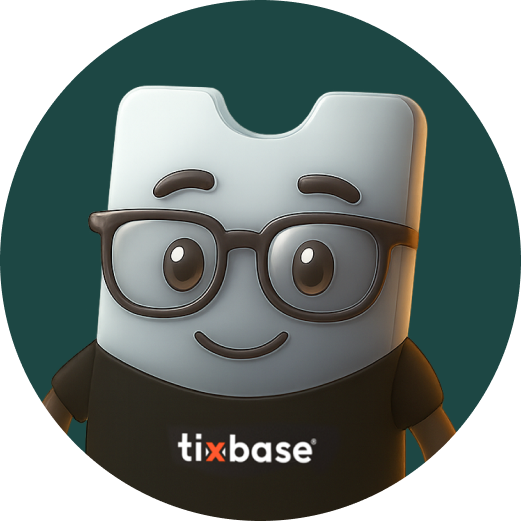
.png)
